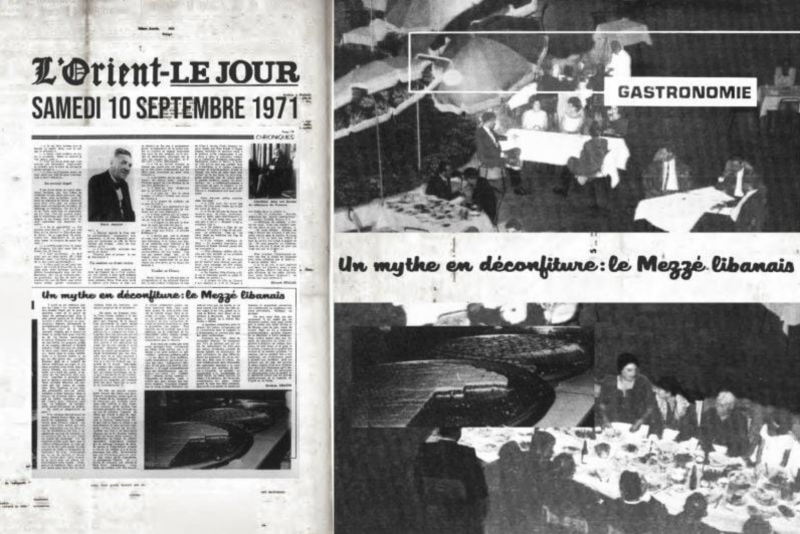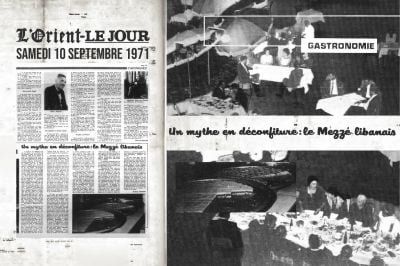
(Credit: Jaimee Lee Haddad)
Is there a culinary art unique to Lebanon? Italian holidaymaker Sandro Vepri recently indulged in a grand meal at the largest restaurant in Wadi al-Arayesh in Zahle, in the Bekaa Valley.
In front of his Lebanese hosts, who were bewildered and deeply surprised, Vepri did not hesitate to cast doubt on what is considered one of Lebanon’s touristic gems: Lebanese cuisine, with its mezze, kibbeh, grilled chicken and salads such as tabbouleh and fattoush.
Despite the array of dishes, both varied and picturesque, the Italian tourist remained indifferent. More concerningly, hundreds of other tourists shared similar sentiments during the first two months of summer, as noted in comments overheard in hotel lounges, cafe terraces and aboard planes and boats taking them back home.
This may be the first time that what has been termed “Lebanese culinary art” has been contested by a significant number of holidaymakers. Their opinion, if it becomes widespread, could be detrimental to our tourism, as good food is as much a lure for visitors as leisure, whether they are European or Arab.
What exactly are they complaining about? A senior Qatari official, Ahmad Kamel Sbai, echoed the Italian tourist's sentiments, criticizing “the quality of the food served by certain restaurants on both banks of the Berdawni [river].”
“If you go there on a weekday,” he added, “you're almost guaranteed to be served leftovers from the weekend. Both grilled chicken and the famous kibbeh lose their flavor and taste when they are prepared the day before and reheated the next day.”
This is not the case on Saturdays and Sundays. Even so, space must be found to accommodate this year's impressive influx of immigrants and tourists. But is this a reason to drive visitors away from the wonderful Wadi on the “lean days” of the week?
Another Frenchman, Yves Caron, accustomed to the succulent cuisine of Toulouse, was puzzled by the universal reputation of our mezze, “which has nothing specifically Lebanese about it.”
“I don't mind having fun,” he said, “counting the dishes and watching the waiters line them up in rows and tiers. But I wouldn't want to try any of those specialties that are nothing special and that we’d so much like to forget when we’re on holiday. Of course, I'm not talking about the starchy foods you get tired of eating. But hummus and foul aren’t the bulk of this ‘national’ mezze.”
“What about canned food like tuna, sardines, mortadella, ham, artichoke hearts and asparagus? What's particularly Lebanese about these manufactured or frozen products that come straight from countries ruled by the consumer society?”
These mezzes are akin to European hors d'oeuvres, although it would be unfair to compare them to those of Spain, for example, which are far more refined and richer.
Not to mention that they lose their primary function as soon as, instead of stimulating the customer’s appetite waiting for the main course, they satiate, overwhelm and often bloat them. The whole meal is reduced to an appetizer that is often indigestible.
“Your mezze is lethal,” the late Professor Vallery Radot once confided to a Lebanese journalist at the end of a lecture tour in Lebanon. The renowned endocrine specialist believed that this incongruous mixture of dishes, sauces and ingredients, washed down with arak, whisky and beer, causes such fermentation that few stomachs can resist the ailments it spawns, particularly ulcers.
“Less than 40 years ago,” said Hage Elias Chakhtoura, a long-time patron of the famous Hage Daoud cafe, “the mezze consisted of just four small plates: In one, a few chickpeas tinged with red pepper; in the second, a quarter of an ounce of Aleppo seeds or pistachios; in the third, a single cucumber cut into four pieces; and in the fourth, a tomato. These plates were often left untouched, merely to be contemplated after each sip of arak. Real drinkers don't eat the mezze.”
Nonetheless, we have a few good restaurants in Lebanon, particularly those that specialize in a few dishes — fish, grills and pasta — and the two or three Beirut establishments that still serve authentic Lebanese cuisine.
Although prices can sometimes be exorbitant, these establishments often import fresh produce by plane: Meat, caviar and salmon. While this approach is commendable, it doesn't allow the average tourist to appreciate real Lebanese cuisine, which is no myth and can still be vaguely imagined at places like Bristol, Ajami or Sofar in Beirut, Samke Harra in Tripoli or Nabeh Mar Sarkis in Ehden.
With a few exceptions, most other restaurants concentrated in the capital and Broumana only serve Western dishes.
However, there is no shortage of authentic Lebanese main courses. While they may not be overly refined, they are no less tasty, featuring spicy or creamy sauces that can satisfy even the most discerning gourmets.
Despite this, there is no restaurant in Lebanon where tourists can try all the traditional specialties on one menu: Arnabieh, siyadiyeh, moughrabiyeh, mloukhiyeh, shish barak, laban emmo, dobo and hrisseh.
According to food connoisseurs, these dishes are affordable and could compete with the best Provençal, Italian or Greek cuisine.
Finally, a word about our desserts. It's a well-known fact that Arab sweets, whose secrets we learned in the souks of Aleppo and Damascus, are among the richest in the world. However, they have become so commercialized that they risk depreciating in the short term.
To undercut Samadi, pastry chefs in Lebanon are striving to prepare the same sweets, but without the taste or flavor, due to the poor quality of the raw materials.
Tourists, unfamiliar with our traditions, are naturally inclined to buy these sweets at the best prices, as they appear identical everywhere. They will be all the more disappointed when they realize that savings come at the expense of quality, especially compared to the pastries served by renowned establishments in the capital, Tripoli or Saida.
This article was originally published in L'Orient-Le Jour and translated by Sahar Ghoussoub.


